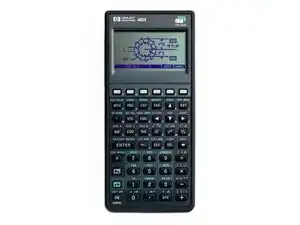Background and Identification
The HP 48GX is on the higher end of HP's graphing calculators. Released in 1993, the HP calculators are known for their RPN format. RPN stands for Reverse Polish Notation, in which the operators follow their operands, instead of the other way around. Operator refers to the thing that affects the numbers- it adds, multiplies, divides, etc. The operands are the numbers that are having something done to them- they are being added, multiplied, etc. To see how RPN works, we can use the example of adding three plus four. In standard notation, the mathematical statement ‘adding three and four’ would be written like this: 3+4. In RPN, however, the statement would be written like this: 3 4 +. This notation was introduced by Arthur Burks, Don Warren, and Jesse Wright in their 1954. It was used by HP calculators during the 1970s and 1980s, and is commonly found in stack-oriented computer programming languages. The appeal of this notation is that it uses very few parentheses, making it useful for programming.
The 48GX has a faster than normal clock frequency, more RAM, and a memory card slot. The X suffix on the name indicates that this calculator can have expanded RAM (memory) and ROM (software application). The model number of an HP calculator is usually in one of three places: below the screen, in the top right corner, or in the top left corner.
Technical Specifications
- Processor: Saturn 1LT8
- Memory: 128 KB RAM, 512 KB ROM
- Display: 131 x 64 pixels, monochrome LCD
- Dimensions: 7.05 x 3.11 x 1.1 inches
- Weight: 0.55 lb.
- Battery: 3 x AAA battery
- Connectivity: Serial, proprietary infrared
- CPU clock frequency: 3.68 to 4 MHz
- Memory clock frequency: 2 MHz
- On-board ROM: 512 KB
- On-board RAM: 128 KB
- Maximum additional memory for expansion card port 1: 128 KB
- Maximum additional memory for expansion card port 2: 4 MB (128 KB addressable at any given time via bank switching)
